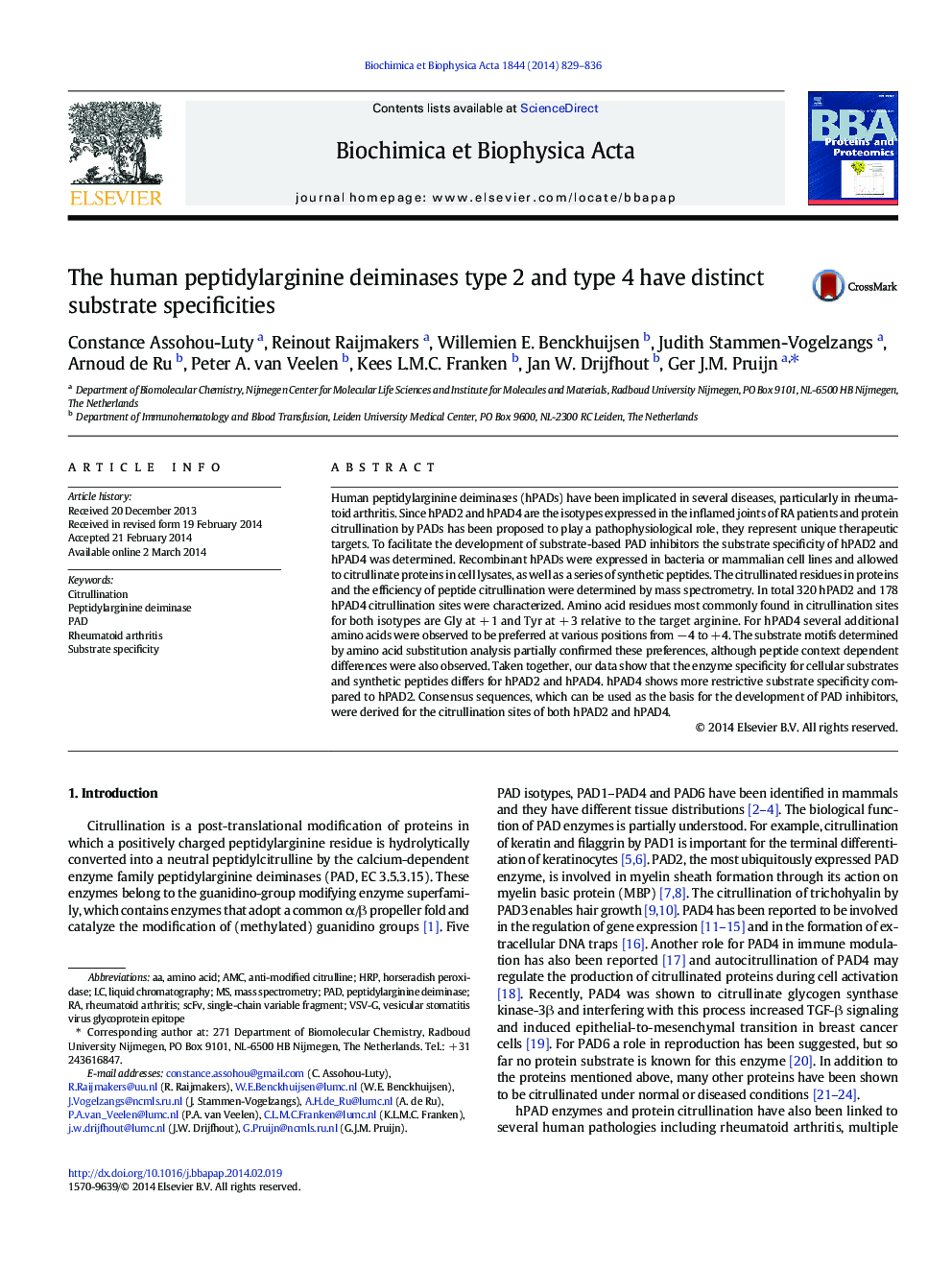| Article ID | Journal | Published Year | Pages | File Type |
|---|---|---|---|---|
| 10536922 | Biochimica et Biophysica Acta (BBA) - Proteins and Proteomics | 2014 | 8 Pages |
Abstract
Human peptidylarginine deiminases (hPADs) have been implicated in several diseases, particularly in rheumatoid arthritis. Since hPAD2 and hPAD4 are the isotypes expressed in the inflamed joints of RA patients and protein citrullination by PADs has been proposed to play a pathophysiological role, they represent unique therapeutic targets. To facilitate the development of substrate-based PAD inhibitors the substrate specificity of hPAD2 and hPAD4 was determined. Recombinant hPADs were expressed in bacteria or mammalian cell lines and allowed to citrullinate proteins in cell lysates, as well as a series of synthetic peptides. The citrullinated residues in proteins and the efficiency of peptide citrullination were determined by mass spectrometry. In total 320 hPAD2 and 178 hPAD4 citrullination sites were characterized. Amino acid residues most commonly found in citrullination sites for both isotypes are Gly at + 1 and Tyr at + 3 relative to the target arginine. For hPAD4 several additional amino acids were observed to be preferred at various positions from â 4 to + 4. The substrate motifs determined by amino acid substitution analysis partially confirmed these preferences, although peptide context dependent differences were also observed. Taken together, our data show that the enzyme specificity for cellular substrates and synthetic peptides differs for hPAD2 and hPAD4. hPAD4 shows more restrictive substrate specificity compared to hPAD2. Consensus sequences, which can be used as the basis for the development of PAD inhibitors, were derived for the citrullination sites of both hPAD2 and hPAD4.
Keywords
Related Topics
Physical Sciences and Engineering
Chemistry
Analytical Chemistry
Authors
Constance Assohou-Luty, Reinout Raijmakers, Willemien E. Benckhuijsen, Judith Stammen-Vogelzangs, Arnoud de Ru, Peter A. van Veelen, Kees L.M.C. Franken, Jan W. Drijfhout, Ger J.M. Pruijn,
